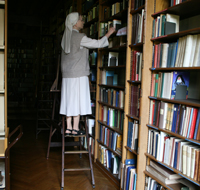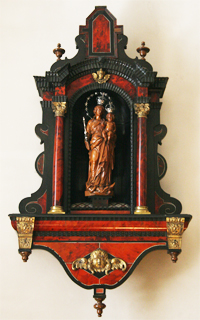 The Windesheim heritage
The Windesheim heritage
For us, the uniqueness of the Windesheim heritage lies in the fact that, from the 16th century, it was passed on to successive generations of young exiles, many of whom were closely connected with the English Martyrs. These generous souls, who were accustomed to adversity, unconsciously tempered the spirituality they first assimilated at Louvain, and then at Bruges, with a certain robustness that we see throughout our long history.
14 September 1629
On the evening of the feast of the Exaltation of the Holy Cross, five English nuns disembarked from a barge at the “Minnewater” at Brydges (Bruges). Where were they from and what were they seeking? They had come from Saint Monica’s in Louvain, an entirely English convent founded in 1609 by the old Windesheim priory of Saint Ursula (1415), situated in the same town.










Origin
Some of the Brothers soon aspired to a life devoted more exclusively to prayer; indeed Master Gerard himself had always felt a desire to withdraw from the world. He already had some experience of the religious life; after his conversion in 1374 he had withdrawn for a period to Monnikhuizen, where he had come under the influence of the Carthusian monks, and had been deeply sustained and moved by the Holy Scripture and the Fathers. But he was also familiar with the life of the Canons Regular of Groenendael, in the Soignes forest, after visiting their Prior Jean Ruusbroec (1293-1381), the great Brabant mystic, who had also greatly influenced him.